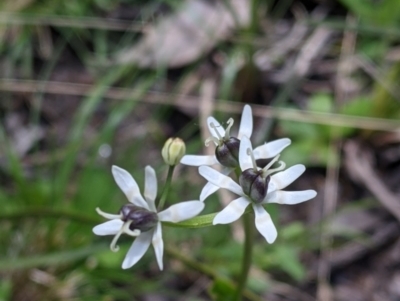Lilies & Irises
This group includes any herbaceous monocot that has prominent flowers in which the flower parts are in two whorls. Monocots have one seed leaf compared to two in dicotyledons. Mature plants are recognised by parallel longitudinal veins in their often narrow leaves and by having flowers parts in threes or multiples of three.
Identification is largely on differences in flower parts, the number of flowers borne at each part of the stem from which a leaf is attached or on the form of basal leaves. Ideally records for lilies and irises should include close-up photographs of the flowers and basal leaves and a shot that shows flower arrangement along the stem.
Announcements
There are currently no announcements.
Discussion
abread111
wrote:
Yesterday
See Arthropodium sp. Albury (A.D.J.Piesse 9) the second image shows a leaf with little teeth on the edge of one of the leaves. If you cannot see them, I'll send you the original photo to your email address. barb
Arthropodium fimbriatum
SuePolsen
wrote:
Yesterday
Ok I’ll go hunting again this week… there’s plenty there about to flower. They should be out this week…
Arthropodium fimbriatum
abread111
wrote:
Yesterday
Sue, please take a close up photo of the leaves as there is a local choc lily with a distinctive leaf.
Arthropodium fimbriatum
Heinol
wrote:
8 Oct 2025
Over the years I have kept a lookout for this twining Thysanotus in Black Mountain and have seen it a few times. Some days ago I found it right alongside fire trails or foot tracks at a number of points and a look around at each point usually revealed a few more plants. During this ramble of about two hours I found more plants than the total of all my Black Mountain sightings of it over the past 2 or 3 decades and almost every plant had more unopened buds than flowers.
Thysanotus patersonii
Significant sightings
- Thelionema umbellatum at Tinderry, NSW
- Dianella tarda at Castlemaine, VIC
- Dianella amoena at Barrington Tops, NSW
- Iris orientalis at Cooma North Ridge Reserve
- Dianella tarda at Suttons Dam
- Ornithogalum umbellatum at Watson, ACT
- Doryanthes excelsa at Fingal Bay, NSW
- Burchardia umbellata at Hackett, ACT
- Arthropodium glareosorum at Moruya, NSW
- Arum italicum at West Albury, NSW
Top contributors
- MichaelBedingfield 345
- trevorpreston 329
- Mike 300
- Tapirlord 259
- sangio7 205
- KylieWaldon 191
- Darcy 161
- AaronClausen 142
- MatthewFrawley 134
- MichaelMulvaney 115
Top moderators
- MichaelMulvaney 1.4K
- Tapirlord 1.3K
- MichaelBedingfield 1K
- BettyDonWood 569
- natureguy 416
- RWPurdie 224
- plants 220
- Darcy 215
- Venture 165
- JasonPStewartNMsnc2016 102








































































































